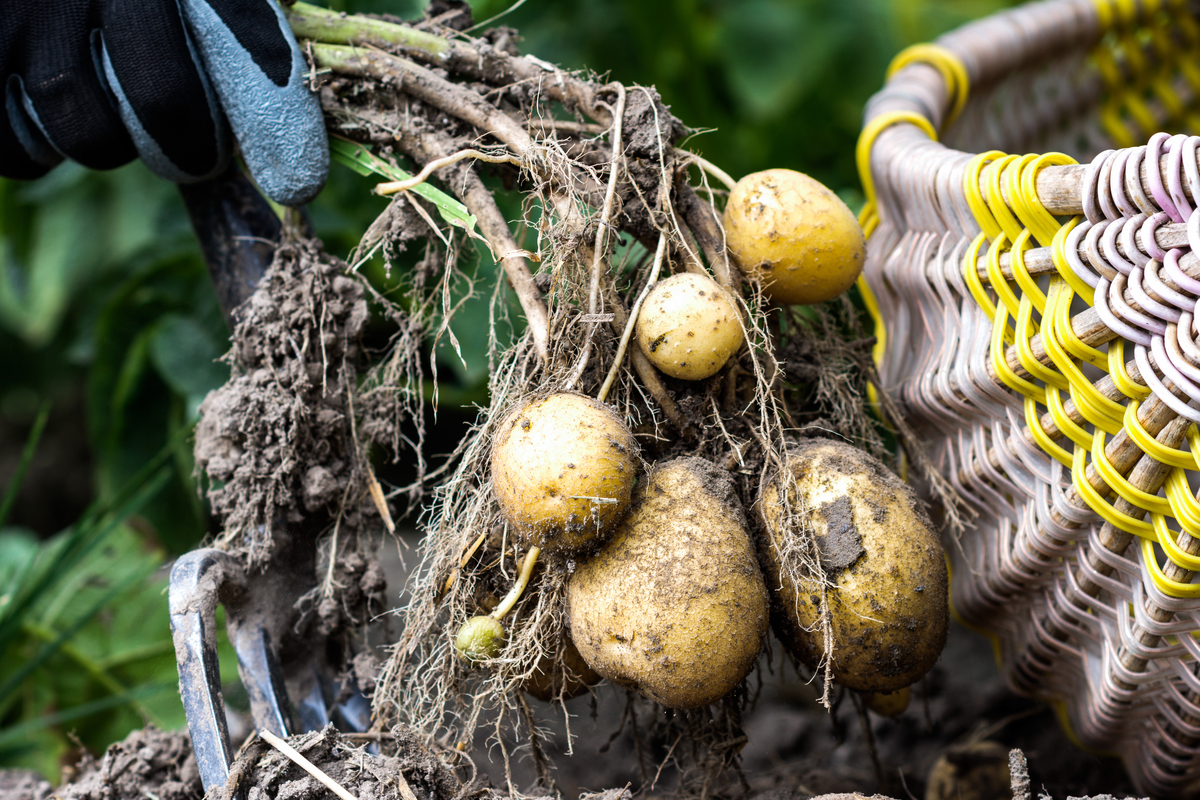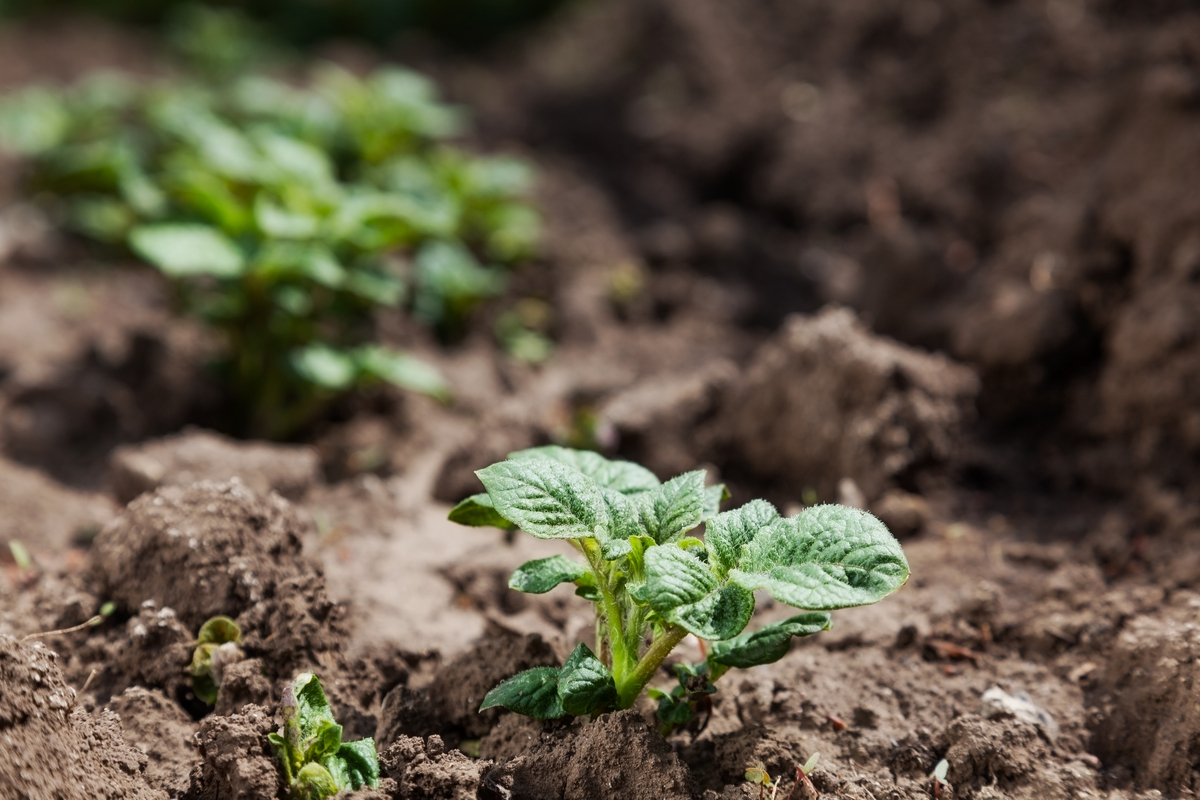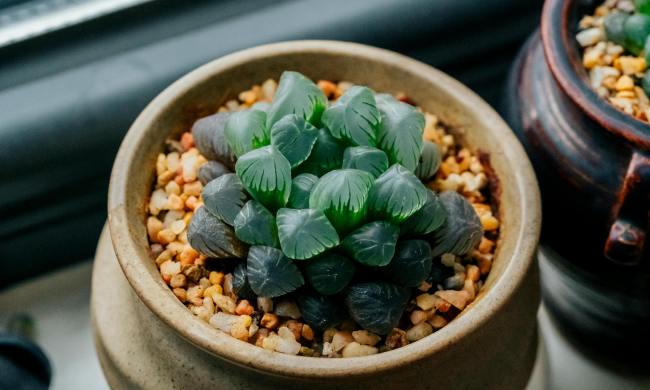Growing organic potatoes isn’t much different from growing regular potatoes. The big difference is making sure that the variety you’ve selected is in fact an organic potato. Good beginner varieties include Yukon Gold, Cobbler, and Norland. When selecting a potato variety, the best way to ensure it’s organic is to start with a potato seed from certified organic farms. Many will have an option for you to call ahead and reserve your seed if you’re interested in a specific variety and want to ensure you get the one you want before they’re sold out.
Growing needs for potatoes
To know how to grow organic potatoes, we have to look at the basic needs of the potato plants. Organic potatoes should ideally get about six hours of sun a day. This means you’ll want to plant them in a spot that receives more sunlight than shade; however, if you’re growing them indoors and don’t have a bright enough space, note that you will need to purchase grow lights to help them thrive.
Potatoes should be planted in soil that has good drainage, so it’s best to avoid plots where you’ve previously grown other crops like potatoes and tomatoes. This will prevent the ground from being too nutrient depleted and less likely to have soil-based disease. To aid in the growth of your plants, you’ll either want to use compost to boost nutrients or get an organic fertilizer suitable for potatoes.
Water your potatoes once a week to ensure they don’t dry out. Keep in mind that during hotter days/weeks, they may need more water than usual to stay healthy. And the opposite is true for weeks that are cooler or cloudier — they don’t need as much water. Take the environment into consideration when you choose when to water and how much to water, in addition to the general once-a-week rule of thumb.

Plant in containers
Growing organic potatoes in containers is the best option if you choose to grow them indoors; however, you can also opt to grow organic potatoes outdoors in pots, baskets, or barrels. When growing organic potatoes in containers, the pots/baskets/barrels you choose should be at least 3 feet tall and 3 feet wide. This gives room for their roots, their foliage, and the potatoes themselves as they continue to grow. Make sure the container you select has good drainage so the soil doesn’t become over saturated — which can lead to rotting plants.
Containers that are about 3 feet across can support the growth of four potato plants. You’re only going to start with a few inches of soil at the bottom of the container. Place the seed potatoes on top of the soil and then cover with a few more inches, but don’t fill the container. As the plant grows, slowly add in more soil to support growth. Starting when the plant is 6 inches tall, add more soil to the container until only 3 inches of the plant is exposed. Repeat: 6 inches of growth, cover with soil until 3 inches is exposed. This process will continue until the container is full.

Plant under mulch (no digging required)
Growing organic potatoes without digging is actually quite simple but does require some diligent care. Because you’re using mulch instead of soil, you won’t be able to rely on nutrient-rich dirt to feed your potatoes. To counter that, you can feed the plants with a fish emulsion after sprouting and right before flowering. If the process is done well, you should be able to see tubers developing after several weeks.
To grow organic potatoes under mulch, you’ll want to loosen the soil you’re going to lay the seed potatoes on. Once loosened, place the seed potatoes (cut side down) on the soil about a foot apart. Cover with a good amount of mulch (half a foot to a foot), then follow the same sort of method you would if you were planting in containers. That is, once the plants sprout and grow roughly 6 inches, add more mulch until 3 inches of the plant is exposed. Repeat. The mulch should always be thick/deep enough to cover any developing tubers to keep them from turning green.
Plant in trenches (trench and hill method)
The trench and hill method of growing organic potatoes is the most traditional. You’ll want to dig trenches that are roughly 6 to 8 inches deep, setting the seed potatoes in (roughly a foot apart). This method will require a lot of room, so if you don’t have much space, you may want to refer above for how to grow organic potatoes in containers.
Once the seed potatoes are in the trenches, cover with about 2 or 3 inches of soil. As you’ll see, the process from here is similar to the other two above. Once the plant grows about 6 inches, cover with more soil so that roughly 3 inches of the plant is still exposed. Repeat and continue to hill up any loose soil that’s around your potato plants until the trench is filled and the plant is well-established.
With any of the above methods, your potatoes will be ready to harvest once the plant begins to bloom. Organic potatoes harvested at bloom will be baby potatoes, which are sweeter because the sugars haven’t started to convert to starch yet. If you want to wait until your potatoes are more mature before harvesting, know that they will be fully mature when the plant begins to die back. It’s up to you when you harvest, but with luck, you’ll have a nice selection of potatoes to not only eat but save to plant for your next crop!


